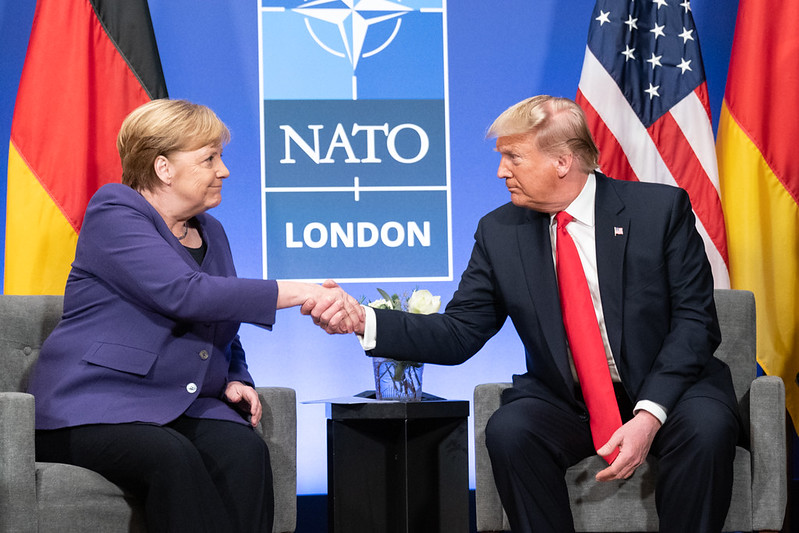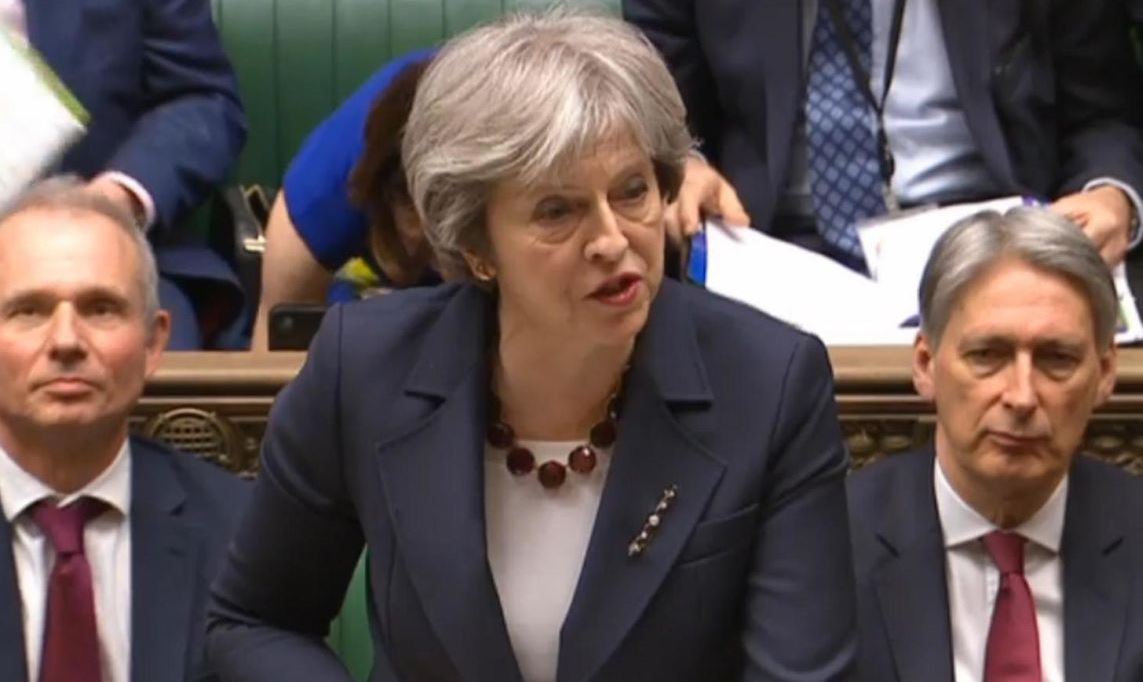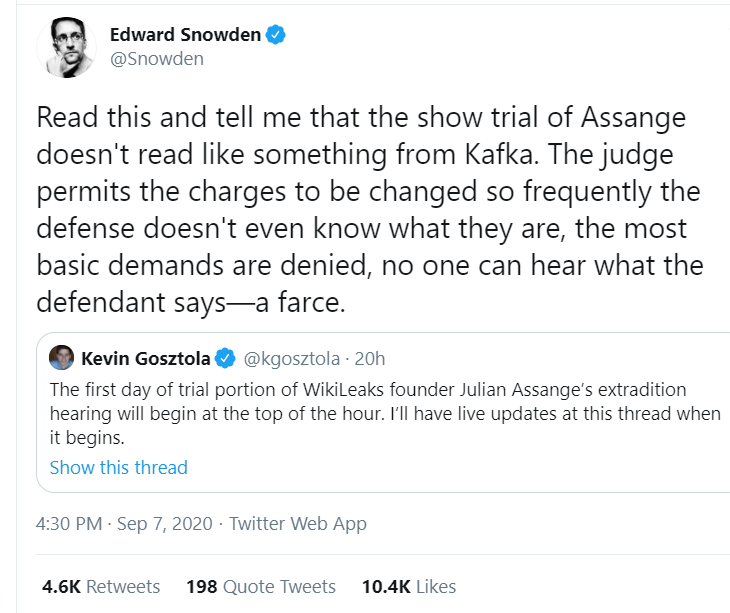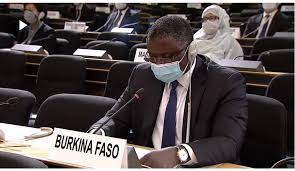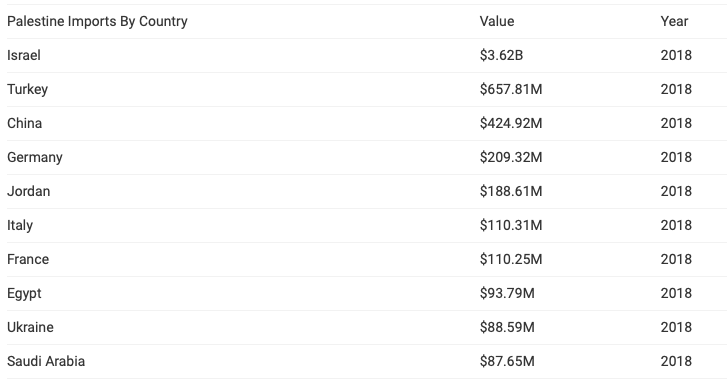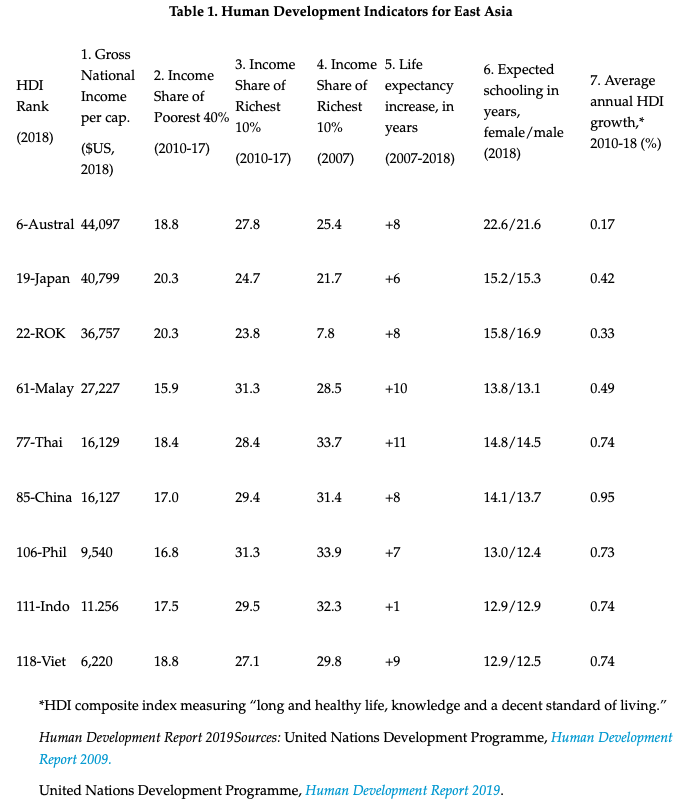It is difficult not to notice something contrived in the currently announced “pandemic” of the Novel Covid-19 virus. Media coverage of this event has all the hallmarks of a coordinated hysterical campaign, namely:
- the use of emotions instead of numbers and logic (for example videos showing allegedly overflowing hospitals and morgues, which can easily be staged or occur due to a natural situation unrelated to Covid-19)
- the refusal to even mention the most obvious counter-arguments (for example, the media will never compare the number of deaths caused by flu in recent years with Covid-19 deaths)
- and the complete censorship of all opinions that disagree with the mainstream media narrative, even those that come from recognised experts.
We have witnessed the publication of numerous fake stories, like the CNN report about bodies being left on the streets in Ecuador which was later debunked. We have frequently seen hysterical headlines that are not supported in any way by the contents of the article.
Finally, the national, as well as the local coverage, is always vague, never saying who exactly is ill or what they’ve got, or whether they are at home or in a hospital, and they never say how they treat the disease. Vagueness in media is a sure sign of lying.
Out of any proportion to reality, the mass media continues to drone on ominously that this is the New Normal, and that we might as well get used to it, that the world will never be as it was before the coronavirus. This is nothing more and nothing less than classic psychological warfare.
Why would a viral outbreak require “psy-ops”, that is, unless something larger was afoot?
The mainstream media as usual labels everybody who objects to their version of events a “Conspiracy Theorist.”
However, in addition to usual roster of sceptics like James Corbett or Del Bigtree, we now have many established scientists and doctors publicly questioning the version of events that is being presented by the mainstream media and governments.
These are, to name a few: Dr Sucharit Bhakdi, a professor emeritus at the Johannes Gutenberg University in Mainz and former head of the Institute for Medical Microbiology; Dr Wolfgang Wodarg, a member of PACE; Prof Dolores Cahill, Vice Chair of the IMI Scientific Committee (she has more important titles than I can fit here); Dr Peer Eifler from Austria; Dr Claus Köhnlein; Dr Scott Jensen, Minnesota Senator; Harvey A. Risch, professor of epidemiology at Yale School of Public Health.
Each one of these intelligent, articulate and trustworthy people with top credentials disagree with the official story.
All these doctors accuse media, governments and WHO of fabricating the Covid pandemic and abusing their powers by taking extreme measures in the face of a disease that has shown no signs of being any worse than a typical seasonal flu.
Some of these doctors add even more disturbing accusations, namely, that some patients died because doctors used a wrong treatment protocol, that medical authorities were directed to list ‘coronavirus’ as the cause of death even when no coronavirus analysis was made, that many deaths were caused by putting people with active Covid-19 into nursing homes and, finally, that a drug capable of saving hundreds of thousands of lives is being denied to the population.
The question is…is this campaign of fear a spontaneous overreaction to a new virus, or was it organized by somebody to achieve some malicious goals?
If we conclude that the pandemic indeed is fake, the worldwide media campaign manufactured, government officials and WHO bribed or coerced, then further questions arise. Is there anyone who has the ability to pull this off?
If yes, then why did they do it, and how?
Long before this “pandemic” we heard talk that we are living through a time of crisis, but it seems nobody ever fully identifies the crisis or what caused it. In our view, the false pandemic is closely related to this crisis and it is impossible to understand current events without a clear understanding of the crisis.
A short answer to the questions posed above: we live in a unique time, at the tail end of a European colonial project that existed for 500 years, making Europe and the US the richest, most influential part of the world and the envy of most of its inhabitants.
From the end of WWII through the 1960’s, this colonial project was gradually replaced by neo-colonialism, controlled almost exclusively by US plutocrats. In the last 10-20 years, the systems of neo-colonialism began to break down due to the economic rise of China and also due to the degeneration of Western elites. In recent years, what we call the Free World maintains its way of life simply by going deeper and deeper into debt.
This situation cannot continue indefinitely, and very soon we can expect an abrupt fall in the standard of living in the US, the UK and most European countries, accompanied by tremendous social upheavals. The US plutocracy has no economic or military means to stop this collapse.
A clever solution would be to pin the blame on a natural phenomenon, like a disease, and then justify any amount of violence necessary to keep the problems resulting from the crisis under control.
US plutocrats conveniently control most of the world’s media and have a huge network of “charitable” foundations and affiliated NGO institutions all over the world. This network has been used for generations as a tool for influencing media, educational institutions, governments and international organizations, for social engineering and ideological control.
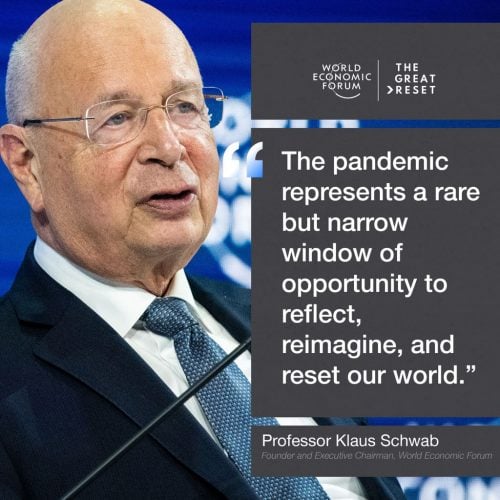
We will now discuss above short thesis in more detail.
Is such a campaign at all possible?
Is there somebody out there who is capable of organising a world-wide media campaign supported by governments and international organisations?
Yes, we can be sure that such players exist because we have a recent example of one such media campaign that was clearly artificially created.
Coincidentally, this campaign was also aimed at convincing the population that we are in immediate danger, and that it will require drastic measures to save us.
I mean, of course, the Greta Thunberg campaign.
In no time at all, a 13-year-old girl was elevated to a position of worldwide prominence by mysterious agents. Whoever organised this campaign was also able to arrange for Greta to speak at the United Nations, the European Parliament, the Davos Economic Forum and so on. On top of this, Amnesty International gave her an award. This makes no sense unless Amnesty International is directed from the same center that command our “independent” mainstream media.
Just recently the first Gulbenkian Foundation Prize for Humanity, about one million Euros, was given to Greta. She was called “one of the most remarkable figures of our days” and a “charismatic and inspiring personality.”
It would be highly unlikely, to say the least, that journalists all over the world became simultaneously fascinated by this little girl and the simple-minded message she was coached to deliver. It is equally unlikely that the UN, the Davos Forum and the European Parliament all independently decided that her platitudes were something interesting and important for them to hear in person. And I am sure that the people in Amnesty International and the Gulbenkian Foundation are not so deranged as to sincerely believe in Greta’s greatness.
To believe that this campaign was caused exclusively by the virtues of Greta would be as naive as believing the 1960’s Soviet media campaign that once glorified the “simple Soviet girl” who wanted to donate her eyes to blind USA Communist party leader Henry Winston came into existence because of sincere journalistic interest in this “heroine” instead of being commanded by the Politburo.
Thus we can safely conclude that forces capable of organising worldwide media campaigns and influence the corridors of power do exist.
Volumes have been written about plutocratic control of the American media, among them “Manufacturing Consent” by Edward Herman and Noam Chomsky, “The Media Monopoly” by Ben Bagdikian, “Taking the Risk out of Democracy” by Alex Carey, “Media Control” and “Necessary Illusions” by Noam Chomsky.
Already in 1928, Edward Bernays, considered the father of public relations in America, wrote:
In almost every act of our daily lives, whether in the sphere of politics or business, in our social conduct or our ethical thinking, we are dominated by the relatively small number of persons…who understand the mental processes and social patterns of the masses. It is they who pull the wires which control the public mind.”
Noam Chomsky put it more bluntly:
Any dictator would admire the uniformity and obedience of the US media.”
Note that control over the US media is achieved without requiring direct ownership of it. Herman and Chomsky quote Sir George Lewis, that the market would promote those papers
enjoying the preference of the advertising public… advertisers thus acquired a de facto licensing authority since, without their support, newspapers ceased to be economically viable.”
Of course, only big advertisers can exercise significant political clout over the media. In the next part of our article we will describe an even more important source of media control, the so-called “charitable” foundations.
To a substantial extent, the mainstream media outside of the US is also controlled by American plutocrats.
Control is achieved in large part because the overwhelming majority of newspapers around the world get their international stories from three (3) news agencies. Two out of the three big news agencies, Reuters and Associated Press, are directly controlled by American plutocrats.
The role of news agencies is analysed in the article titled “The Propaganda Multiplier” published in Off-Guardian. In one particular case study, the geopolitical coverage in nine leading daily newspapers from Germany, Austria and Switzerland was examined for diversity and journalistic performance.
The results confirm a high dependence on global news agencies (from 63% to 90% of content, excluding commentaries and interviews) and the lack of their own investigative research.
More direct methods of control are described, for example, in the book Journalists for Hire: How the CIA Buys the News by Dr. Udo Ulfkotte. Dr. Ulfkotte died from heart attack at a relatively young age shortly after publishing his book in 2014. An English translation of his book is already for years listed as “Currently unavailable” on Amazon.
The invisible hand of the free market is refusing to bring this book to its readers. Although Dr. Ulfkotte mentions only the CIA in the title of his book, he makes it clear that “charitable” foundations are also heavily involved in foreign media control.
The hardest part to understand is how governments all over the world were forced to accept the media narratives during this false pandemic.
To start with, most governments have no independent capacity to evaluate medical events and they have no choice other than to accept WHO advice. Furthermore, US government and globalist medical organizations used their influence.
One of the very few heads of state who dared to reject the coronavirus panic, Belarusian President Lukashenko, testified that he was offered 950 million dollars from the IMF and the World Bank if he would introduce quarantine, isolation and curfew “like in Italy”.
The plutocratic influence network
To organise a worldwide campaign changing life in the whole world, a force that deserves to be called a shadow government is needed. Theodore Roosevelt, who was US President from 1901 to 1909, informed the world that:
Behind the ostensible government sits enthroned an invisible government owing no allegiance and acknowledging no responsibility to the people.”
He called this shadow government “the unholy alliance between corrupt business and corrupt politics.”
However, to run a shadow government on such a scale, one needs large, well-financed institutions. Skull & Bones, the Masons or the Illuminati would not do. It would require an extensive network of institutions that employ well-paid professionals who are given reliable career paths.
The only way to run such an extensive network (designed, as it were, for essentially nefarious purposes) would be to keep it in full view, but disguised with an innocent appearing cover. US plutocrats a long time ago found the perfect cover story that would allow them to establish shadow government institutions.
These institutions are masked as “charitable” foundations. The foundations act through financing wide networks of “think tanks” and NGO’s all over the world, and therefore their power is not constrained by national boundaries.
The most notorious foundations are, to name but a few: The Rockefeller Foundation, The Ford Foundation, the Open Society Foundation, the Carnegie Foundation, and the Bill & Melinda Gates Foundation.
One important line of foundation activity is helping careers of servile journalists, scholars and experts lifting them into positions of prominence. Foundations aid struggling journalists and academics by giving them “prestigious” prizes, fellowships and research grants. Though мany of these professionals will spend most or all of their careers in university and government being supported mostly by taxpayer money, they get these lucrative and prestigious appointments due to their history of conformity to foundation agenda.
For example, nothing will help a recent PhD in political or social sciences to get a tenure-track professorship position better than being awarded a grant by a foundation. In this way, foundations leverage their money by elevating professionals that have shown their fidelity to positions supported by state money in the amounts much greater than the money they have spent for prizes, fellowships and grants. The result is that, though few people occationally rebel, most of professionals in ideological sphere understand the game and toe the line.
Foundations often collaborate closely with the CIA, but it would be incorrect to say that the foundations are controlled by the CIA. It is rather that the same people who control the foundations, also control the government -including the CIA. Both systems are merely parts of a larger system that freely shares cadres between entities; this is often referred to as the “revolving door”. As an example, Reuel Marc Gerecht, a former CIA officer, is now a senior fellow at the “Foundation for Defense of Democracies.”
As we mentioned above, foundations act through think tanks and NGOs. Hundreds or thousands of these organisations exist. Here we will not make the effort to classify them and enumerate them. We will simply call all the foundations, together with think tanks and NGOs, the Plutocratic Influence Network (PIN).
The Plutocratic Influence Network is involved in ideological control, social engineering, and direct subversion of “dictatorships,” meaning regimes that do not allow American plutocrats to exploit their countries. Plutocratic media prefers to call PIN “Civil Society,” cleverly disguising PIN as a loose network of independent citizen initiatives and the basis of democracy.
Here is what think tanks do, according to Martin S. Indyk, vice president and director of the Foreign Policy Program at Brookings, one of the oldest and most prestigious think tanks in Washington:
Our business is to influence policy with scholarly, independent research, based on objective criteria, and to be policy-relevant, we need to engage policy makers,”
Of course, “objective research” never brings results which are contrary to plutocratic interests.
According to Matt Taibbi:
the largest dozen or so of these privately funded ‘research institutions’ have an immense impact on public discourse. The Heritage Foundation, the American Enterprise Institute and the Cato Institute exist solely to produce research and commentary that will influence public opinion. They have fancy halls in which to hold press conferences and roundtables and their hired help – people like Heritage’s Cohen and Carnegie’s McFaul – wait virtually around the clock for journalists to call.”
The Russia Journal, March 15-21, 2002
Think tanks also receive money directly from corporations and from Western governments. To complicate things further, foundations make grants to each other and occasionally to private companies.
The scale of foundation and think tank activity is enormous. According to political commentator Vladimir Simonov, in 2004 there were at least 2,000 Russian non-governmental organisations that live on US grants and other forms of financial assistance.” Many millions of dollars are spent on “nurturing some ‘independent press centres’, ‘public commissions’ and ‘charity foundations’” (RIA Novosti June 1, 2004).
The diabolical horns of the foundations pop up in the most unexpected places. The World Health Organisation, which most presume is a public resource, is “generously” supported by the Bill & Melinda Gates Foundation (BMGF).
Swissmedic, the Swiss Agency for Therapeutic Products, (which sounds like the epitome of cleanness and neutrality) is also supported by BMGF. There is little doubt that we will find foundation money in hundreds of other organisations we had presumed neutral.
We can only guess how this money will influence bureaucrats and thus put much larger amounts of taxpayer money under foundation control. As experience shows, bureaucrats and politicians are surprisingly easy to bribe. All it takes is a little additional money for travel or a few conferences in nice places. Or it might be small bonuses on top of their salaries, or an opportunity to get a well-paid and honourable position after retirement or good jobs for bureaucrat’s relatives and friends.
While it is difficult to penetrate the secretive world of the Plutocratic Influence Network, sometimes events occur that show us the degree of coordinated control inside it. What is the connection between Transparency International (TI) and the Covid fake pandemic?
Dr Wolfgang Wodarg, previously a distinguished member of TI’s Board of Directors, publicly denied the existence of the pandemic. In response, Transparency International removed D. Wolfgang Wodarg from its board. The situation is bizarre.
Dr Wodarg (who is a medical doctor) had expressed his own professional opinion which was in no way related to his work at TI. The censorship of TI can only be explained by an order from those who fund and control it, i.e. the same Plutocratic Influence Network which, in our opinion, organised the whole Covid campaign.
Any serious investigation into the Plutocratic Influence Network requires huge resources and political will. The US Congress tried to investigate foundations only twice, the first time between 1913-1915 (the Walsh Commission) and then in 1954 (the Reece Committee).
The Walsh Commission was created to study industrial relations and touched foundations only tangentially. Its final report in 1915 points out that the goal of a foundation is not charity, at least not in the original meaning of this word, but ideological control over education and media:
The domination by the men in whose hands the final control of a large part of American industry rests is not limited to their employees, but is being rapidly extended to control the education and “social service” of the nation. This control is being extended largely through the creation of enormous privately managed funds for indefinite purposes, hereinafter designated as “foundations,” by the endowment of colleges and universities, by the creation of funds for the pensioning of teachers, by contributing to private charities as well as through controlling or influencing the public press.
The Reece Committee did a more comprehensive investigation, which however did not come to completion because it was sabotaged by powerful forces in Congress. Nevertheless, a lot of valuable materials were collected, and in 1958, Rene A. Wormser, a member of the Committee, published a book, Foundations: Their Power and Influence, in which he described the results of the investigation.
We have no space here to review this book and will limit ourselves to some short quotes.
Wormser notes a great (and dire) influence that foundation-financed social research has on government:
Many of these scholars…serve as “experts” and advisers to numerous governmental agencies. Social scientists may be said to have come to constitute a fourth major branch of government. They are the consultants of the government, the planners, and the designers of governmental theory and practice.
They are free from the checks and balances to which the other three branches of government (legislative, executive, and judicial) are subject. They have attained their influence and their position in government through foundation support.
What is more, much of this research can be classified as “scientism,” that is, pseudo-science pretending to be as objective as physics, but in fact giving results that are desired by those who run the show.
Wormser quotes the 1925 Carnegie Endowment for International Peace report which openly states its antidemocratic coercive goals:
Underneath and behind all these undertakings there remains the task to instruct and to enlighten public opinion so that it may not only guide but compel the action of governments and public officers in the direction of constructive progress.”
The book also describes briefly a blatant case of social engineering by the Rockefeller Foundation, when they supported the fake sex research of Dr. Kinsey. The Kinsey Reports went on to eventually cause tremendous changes in the private lives of Americans.
Here we can conclude that the Plutocratic Influence Network was created for influencing education, public opinion and governments. It may even alter our most basic and private attitudes by making use of covert propaganda and fake social “research”. The plutocrats have huge resources and many thousands of trained professionals to perform these tasks. Therefore, they are very likely to have the appropriate tools required to create a false pandemic.
We will talk about their specific techniques and goals below.
What crisis?
Since at least 2008 we have been hearing from everywhere that we live in troubled times, that a crisis is coming. According to WEF Founder Klaus Schwab, “The Great Reset” is required. The whole world order is nearing its end and new and sinister order is coming. What exactly this crisis is remains unexplained.
As already noted in the introduction, our claim is that the much-publicised impending crisis is simply the denouement of the European colonial project that began over 500 years ago. During this period of time, Western European civilization (including its extensions, most importantly the US) led the world economically and militarily, and dominated the world’s art, science and ideology. The result of this crisis will be the loss of Europe’s leading position and a precipitous drop in the standard of living of its population.
Western propaganda, of course, attributes the material prosperity of the West to freedom, democracy, free enterprise, free media, and human rights. And last but not least, to important contribution of feminism and LGBTQ+ rights. Though few Westerners would dare say it openly nowadays, most believe that their prosperity is also due to their superior work ethic and mental abilities.
In fact, it is the opposite. Western prosperity is based largely upon military power, the systematic violation of the most basic freedoms and human rights in exploited countries, and systematic interference in free markets. The wealth of the West is directly connected to the misery of most of the world.
US army bases all over the world, constant wars, bombings and drone strikes are not required for free trade and free markets. It would be naive to believe that the US Army is used to bring freedom and human rights onto benighted natives. On the contrary, armies are employed to steal resources and exploit conquered populations as cheap labour.
For our purposes we can divide the era of colonialism into three stages, Direct Colonialism, Neo-colonialism and, more recently, the Terminal Stage of Neo-colonialism which is based on deeper and deeper levels of indebtedness.
Western Direct Colonialism of the New World and what later became known as the Third World began in earnest over 500 years ago, but this period of direct rule gradually began to break down after the end of WWII.
When war between Nazi Germany and the USSR was ignited, it looked like the Anglo-American domination of the post-war world was assured. Unfortunately for the West, WWII led to the rise of the Soviet Union as a global power, and the creation of a socialist China (the full implications of which were not felt until recent decades). The American establishment briefly hoped that the situation might be saved by their new nuclear weapons; however, the Soviet nuclear bomb tested in 1949 put an abrupt end to their dreams of perpetual global rule.
Economically, though, full victory was achieved. At this point in time, the US produced 50 percent of the world’s economic output. Most technically-advanced products were manufactured only in the US and therefore sold at top prices, due to almost complete absence of competition. Their main industrial rivals, Germany and Japan, were laid in ruins.
The US planned to prevent the rebuilding of their industries in an attempt to maintain their economic world domination indefinitely. The Morgenthau Plan was a proposal to eliminate Germany’s ability to wage war by eliminating its arms industry and its ability to compete by restricting other key German industries. Japan was completely prostrate before the American Navy and occupation forces.
With the US economic and naval domination of the world, British, French and all the other colonies naturally began to fall under de facto control of the US. To exploit them, old style colonial direct control was no longer needed.
Therefore the decolonization process and transition to Neo-colonialism. In establishing formal independence of former colonies, Soviet help was only of secondary importance, except in China, Korea and later Vietnam.
Militarily and politically the West ran into a quagmire soon after WWII. The Soviet Union suddenly became a strong military rival, seizing control of Eastern Europe and immediately afterwards aiding China to liberate itself. There were strong communist parties in Italy, France and Greece; China soon began to put pressure on Asia, most significantly in Korea and Vietnam.
To contain the Soviet Union and China, the US desperately needed allies. The only solution was to allow Germany and Japan to restore and develop their industries.
As it turned out, this solution contained seeds of its own destruction. Over the years, German and Japanese manufacturers quickly became successful competitors, and gradually undermined American pre- eminence. America’s treatment of Germany and Japan is often presented to us as the epitome of virtuous generosity, of the beatific desire to share American-style democracy and prosperity with all the nations of the world.
This apparent open-handedness was, however, the exception rather than the rule. If these countries had not been needed as bulwarks to contain the spread of communism, they would have been left de-industrialized, backward and exploited.
Common tactics of neo-colonialists include bribing the local elites, providing them with weapons, loans, mercenaries, police and security services training, political and media support, offshore havens for stolen monies and the ever-present threat of direct military intervention. These methods are described in detail by Chomsky and Perkins among others.
After the breakup of the Soviet Union and the reforms in China, it looked again, as it did during WWII, that an era of US world domination was at hand. Russia was greatly weakened, its wealth plundered. Politically, it was dominated by the US. China appeared to be nothing more than a limitless Bangladesh, an endless source of cheap labor, a loss of control by the Communist Party just a matter of time.
Only one obstacle stood between the US and total world domination – the Russian Strategic Nuclear Forces.
It was expected, however, that Russia could not maintain them for long. The American foreign debt, which had grown so rapidly throughout the Reagan era because of growing Germans and the Japanese competition, stopped growing under Clinton. All looked rosy. Even military expenditures were somewhat reduced under Clinton. It was the “end of history”, they proclaimed.
And then, the victory unexpectedly turned into a crushing defeat. Putin wrestled control of Russia away from the West-friendly oligarchs and started to restore its economy, its independence, and its army. This was followed by unexpected victories over American-supported-and-armed Georgian forces in South Ossetia, then Crimea, Donbass and Syria. Russian military contractors began popping up in Libya and other African countries.
China has become even a bigger problem. The Chinese tricked the West in a big way. The Communist Party kept the control. They attracted Western companies with cheap labor, good organization and infrastructure. And then, the Party created conditions first for copying and mastering Western technologies and later for developing their own advanced technologies. Unlike Bangladesh, they did not let hard-earned dollars to be squandered for upper-class consumption. They spent them for education, research, infrastructure and building up their own industrial might.
With its growing economic power, China was able to do what the Soviet Union was never able to do – to displace the West economically in the Third World, which included most of Asia, Africa and Latin America. With losing its pre-eminent place at the top of the global economic pyramid, America’s foreign debt resumed its growth and has now reached truly unsustainable dimensions.
Similar debt crises have occurred in the UK, Spain, Italy and other countries that piggy-backed onto American neo-colonialism.
This crisis does not depend on the incompetency of Trump or the cleverness of Putin or Xi, it is entirely objective.
For a while after the initial setbacks, the US government continued to pin its hope on the military. After 2001 the Pentagon budget was growing again, starting up new wars all around the world.
However, these wars failed to produce the desired economic benefits. Quite the opposite. Gradually, American generals began to realize the limits of American military power. They realized that they cannot fight Russia and China under realistic scenarios. We have no space here for a more detailed analysis of this interesting and important question.
We found only one work that attempts to quantify the “real” GDP of Western countries – one that takes into account the massive foreign trade deficit. The Awara Study on Real GDP Growth Net-of-Debt concluded that:
The real, debt-adjusted, GDP growth of Western countries has been in negative territory for years. Only by massively loading up debt have they been able to hide the true picture and delay the onset of an inevitable collapse of their respective economies. The study shows that the real GDP of those countries hides hefty losses after netting the debt figures, which gives the Real-GDP-net-of-debt.”
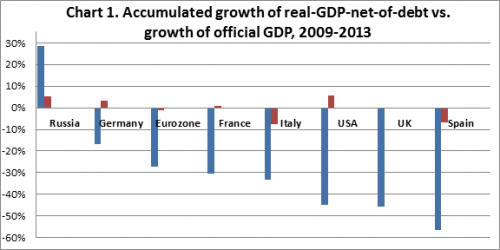
This study claims that from 2009 through 2013, the real GDP-net-of-debt decreased approximately 45% in the US and the UK; it dropped in Spain by 55%, Italy by 35%, France by 30% and Germany by 18%. Though we do not consider these numbers precise, we think they reflect the reality pretty accurately.
Even though the West is already feeling a pinch, it is still very difficult for the majority of Westerners to recognize the coming crisis.
They may be reluctant to admit they were ever the beneficiaries of brutal colonial thievery, or that the free ride has come to an end. They short-sightedly focus on blaming China for taking their industrial jobs, never doubting for a moment their right to cheap Chinese products. They still fail to understand that when Western jobs come back, the goods currently being manufactured in China by cheap labor will become unaffordable to most Westerners.
Why would they do it?
Assume, as we have shown above, the ruling plutocrats have the ability to organize a fake worldwide pandemic. Why would they want to do such a thing? How would they profit? Let’s look at possible motives.
Nothing is new under the moon, and the regime in Washington has a history of using fabricated crises to achieve their goals. According to H.L. Mencken:
The whole aim of practical politics is to keep the populace alarmed (and hence clamorous to be led to safety) by menacing it with an endless series of hobgoblins, all of them imaginary.”
One reason for a “pandemic” might be to extract benefits from the widespread economic disruption resulting from lockdowns. It is quite likely that the big companies will be able to swallow up their smaller competitors, who were often forced to close their doors by the local authorities.
US administrators and those of the European Union announced huge Covid19 relief measures to the tune of many hundreds of billions of dollars and euros respectively. Who will profit from this windfall? Most likely some well-connected big players. Business Insider magazine reported in June 2020 that “American billionaires are now nearly 20% richer than they were at the start of the coronavirus pandemic, according to a new report by the Institute for Policy Studies.”
Pharmaceutical companies will be certainly interested in vaccination profits. But are they powerful enough to pull the whole show? Not likely.
Atomization of society, breaking up community solidarity, eroding all non-monetary connections between people, destroying family relations and weakening blood ties, is a long-standing plutocratic project. Now, using this fake pandemic, the plutocrats have gone even further, now they train us to see each other not as friend, not as brother, not even as a source of profit, but mainly as a source of mortal infection.
This message is conveyed not only verbally through the mass media; we are physically compelled to keep our distance, shamed into refusing our neighbor’s handshake, and threatened with fines for being seen without a mask. The physical aspect of social engineering is more effective than simple verbal brainwashing and it makes the social changes more permanent.
Physical restraint creates social habits that will be difficult to break in the future.
While all the above reasons may be valid, the main reason in our opinion is the impending crisis of the West described above. The paradigm of Western society is based upon ever-growing consumption. Westerners do not understand that it is possible to live with less and be happy.
One can expect that the coming drastic fall in consumption will result in the permanent breakdown of Western society. We are already seeing widespread rioting in American cities. With the widely accepted cover story of the “global pandemic”, ruling plutocrats intend to cover up their past failures and continue ruling under an artificially created state of emergency.
Conclusion
We have presented our analysis of the current Covid-19 “pandemic”. If indeed deliberately planned it could be considered a crime against humanity. Even more ominously, there are indications that global lockdown is only the first taste of what eventually might be a semi-permanent state of emergency rule.
Bill Gates himself, on June 23 in a video currently featured on the US Chamber of Commerce Foundation website, openly promised us that there is going to be a “next one”, and – “That one, I say, will get attention this time.”
One of the most important considerations in investigating a suspected crime is finding a motive. Cui bono – who benefits? We described a possible motive for the events and showed that the suspects possess instruments that make fabricating a global “pandemic” possible.
If you work for a foundation, an NGO, an international organization, or a government and have first-hand internal knowledge of events, we invite you to write to us.
*
Note to readers: please click the share buttons above or below. Forward this article to your email lists. Crosspost on your blog site, internet forums. etc.
Gregory Sinaisky has Ph.D. in Computer Science and lives in Zurich. He writes among other subjects about disinformation in media, military affairs, social and scientific topics.
Featured image is from OffGuardian






